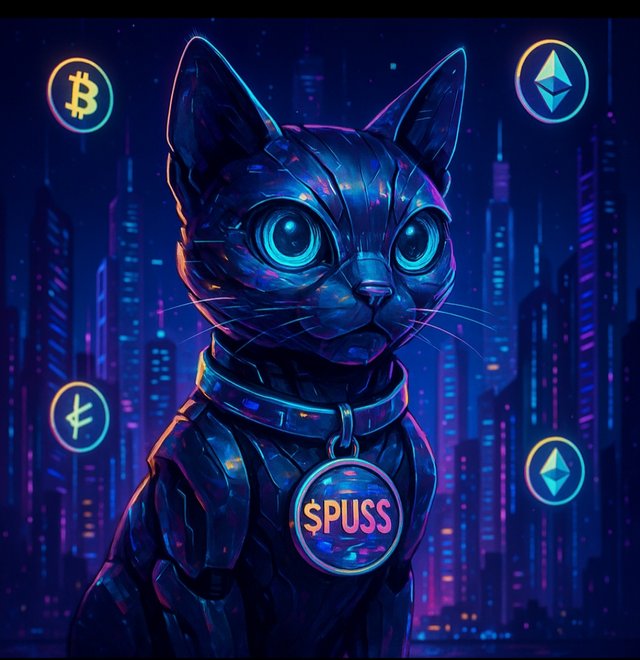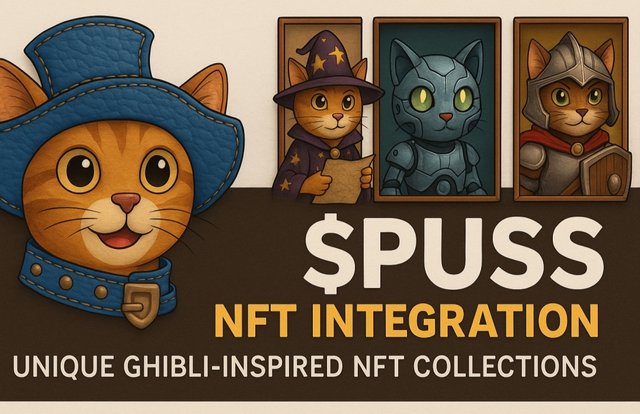Understanding Gas Fees And Transaction Cost Of $PUSS COIN
INTRODUCTION
Gas fees and transaction costs are other considerations for blockchain transactions that architects feel necessary to understand for end-users to combine their interactions with decentralized networks. These fees can sometimes be extremely small, and at times they shoot up astronomically under a highly congested network. Users who use cryptocurrencies such as PUSS Coin ought to be well apprised of how these fees are calculated and how they can be minimized so as to engage competitively and effectively in the blockchain world.
Gas fees act as the incentive for the validators and miners who keep the network safe and efficient. It is basically a measure of computational effort required to carry out any operation considered as sending tokens or performing smart contracts. So, if the users learn these fees, they can decide when to and when not to use the blockchain services, which also involve those that use the PUSS Coin.
Different blockchains entail different fee setups, with an attempt from emerging Layer 2 solutions to reap massive reductions in these fees. Users of PUSS Coin must stay abreast of technologies being developed and best practices to minimize transaction fees that allow them to be part of the ecosystem without paying some unnecessary expense.
- IMPACTS OF SMART CONTRACTS
Smart contracts are self-executing agreements that are deployed onto a blockchain. These contracts contain logic that triggers certain predefined actions on the basis of input data. Each line of code requires some amount of computation, which translates to a higher gas fee. It means the more complex the smart contract, the more expensive is the transaction.
For instance, when interacting with a decentralized exchange or yield farming protocol, many functions have to be called: for approvals, for transfers, for swaps, and so on. All these steps raise the gas requirement. Unlike a simple w2w transaction, a smart contract processes a lot more data, performs multiple operations, and invokes external contracts-a cost added to the user.
To decrease such fees, the developer tries to write optimized contracts that consume less gas. This requires avoiding redundant operations, limiting storage accesses, and code execution smooth. When a smart contract is inefficiently written or too complex, the gas fees increase, and interactions become slower, thereby limiting accessibility for the basic blockchain user.
- DIFFERENCES IN BLOCKCHAIN FEES
Each blockchain network operates with a different gas fee model-the way it is calculated and collected. Ethereum often gets higher fees, being the most popular and in demand. Other chains will provide much cheaper transaction costs, so they act as preferred options by developers and users looking for a cheap alternative.
This difference in fees takes a toll on deployment decisions of projects. Developers decide to set lower limits on fees so that everybody can join and be able to use it. For instance, using a lower transaction fee blockchain to launch an NFT collection or a play-to-earn game would attract users who might otherwise afford high gas fees on Ethereum and other similar networks.
Users also evaluate fees when they make choices for transact points. Very high gas fees prevent small transactions and very ordinary transfers. Networks charging lesser fees encourage very frequent interaction, involving experiments in DeFi. Therefore, gas fees are central to adoption of blockchain and behavior patterns of users from one ecosystem to another.
- ROLE OF VALIDATORS AND MINERS
Validators and miners remain important for the blockchain network, having a great role in confirming transactions and securing the network. Miners within PoW systems compete against each other for selection by solving some mathematically complex puzzles to validate a particular transaction, whereas PoS validators are selected by others based on their stake. In any case, they are further paid gas fees for their contributions in terms of computation or stake.
Since an actor is paid more when the fees are higher, his interest lies in prioritizing those transactions with the highest fees. Users with such incentives would keep bidding up the fee to gain priority for their transaction. Thus, a fee market arises, providing an opportunity for expensive or time-sensitive transactions to exclude smaller ones, especially during congestion or peak network activities.
Without these validators and miners, the protocol would be prone to fraud and manipulation. Gas fees instead reward them and, in so doing, deter spammers from making any transactions since they are expensive. Hence, gas act as a reward and as a shield, keeping the blockchain upgrades intact and secure.
- LAYER 2 SOLUTIONS
Layer 2 solutions like Optimism, Arbitrum, and zkSync reduce layer 1 transaction costs and congestion by processing transactions off the main blockchain. They group or 'roll-up' a large number of transactions and then settle them as one batch on the Layer 1 chain, which greatly reduces the gas costs for a single transaction.
Layer 2 solutions maintain the security of the base layer while allowing better scalability. Users thus have the means to perform actions such as trade or transfer of tokens with speed and cost-effectiveness. Layer 2 also allows cheap, more interactive decentralized applications to be developed by developers. This is particularly useful while playing games, making micropayments, or trading NFTs.
Thus, Layer 2 implementation reduces the load on mainnet blockchains, allowing more people to benefit from blockchain ecosystems. With rising Web3 applications, Layer 2 is becoming necessary to process heavy transaction loads efficiently and offer the best user experience while sustaining the trustless feature of decentralized systems.
CONCLUSION
Gas fees and transaction fees are basic elements that users, and developers, need to be aware of in the crypto space. From the complexity of smart contracts, enhancements in the core layer, differences from one chain to another, validator incentives, and Layer 2 scalability-the list goes on-all these and many more aspects directly impact the efficiency and cost at which the end application runs under a blockchain. Awareness leads to smarter usage and broader accessibility.



https://x.com/steemblogger/status/1928911257412768250
Upvoted! Thank you for supporting witness @jswit.
https://x.com/steemblogger/status/1923732796813516986
https://x.com/steemblogger/status/1923732613681775092
https://x.com/steemblogger/status/1923732039963910230
https://x.com/steemblogger/status/1923731793838006712
Note:-
Regards,
@adeljose